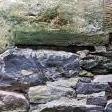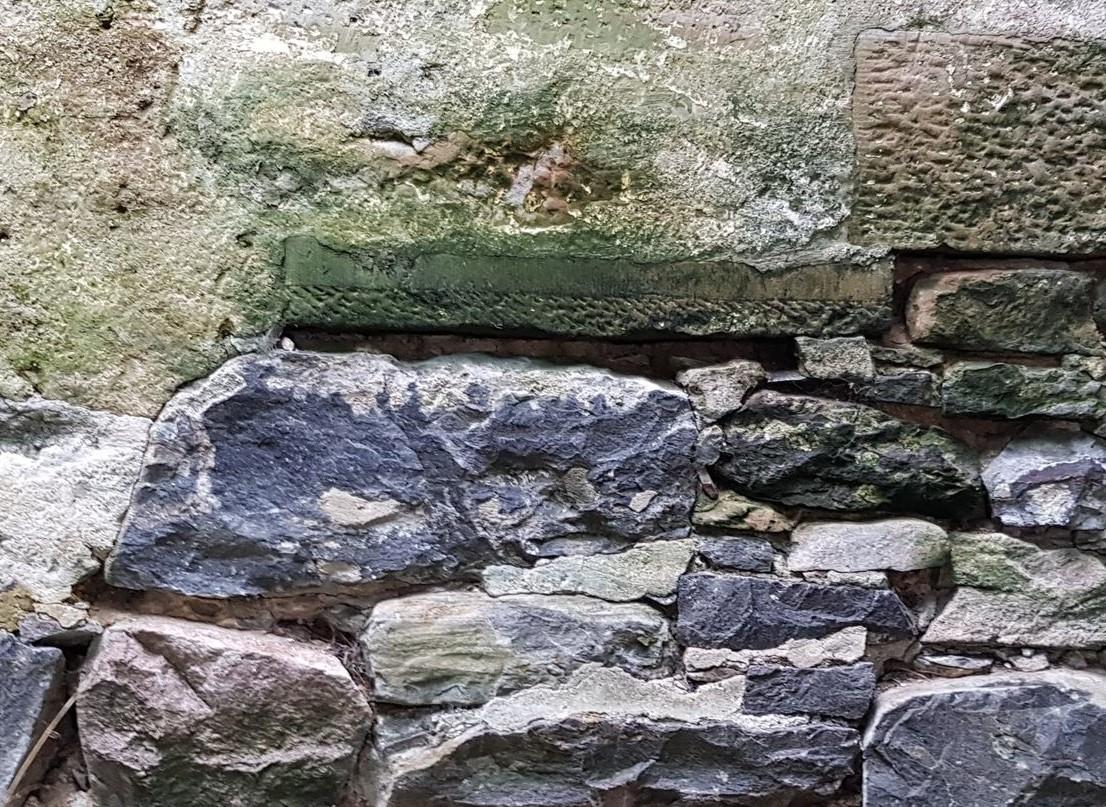-
Posts
9813 -
Joined
-
Last visited
-
Days Won
81
Everything posted by saveasteading
-
See if you can keep the wood structure completely dry . as @JohnMo , but also with clear space underneath (not boxed in) so that it can have draughts and dry Unless you use very special timber it will start to go mouldy and rot immediately, and a 10 year max life should be expected for the wooden surface.
-

Cold flooring in extension
saveasteading replied to TryC's topic in House Extensions & Conservatories
More questions. How recently was this built? The plaster looks damp still, and perhaps the floor too. How thick do you think the celotex is? Is there a space between concrete on the ground, and the timber floor? Is there any heating in the room? For an immediate benefit, stuff the draughty hole with rags: it will be a good test before doing it permanently. -

Does aerobarrier negate need for airtightness detailing?
saveasteading replied to SBMS's topic in Ventilation
Accepted. I can see that bigger gaps would fill substantially as you say, and the microscopic ones are the least issue anyway. and it is filling from the inside so the weather shouldn't be any issue. -

Does aerobarrier negate need for airtightness detailing?
saveasteading replied to SBMS's topic in Ventilation
Do we know that this stuff will stay in place / not detetiorate as a permanent seal? I'm wondering if some/ most of the seals are just a few fibres, because as soon as they cover a hole, the draught ceases and no more fibres will adhere. What happens when there is air pressure in the other direction (out to in)? -

Copper vs aluminum clouts for slate roof?
saveasteading replied to ruggers's topic in Roofing, Tiling & Slating
There will be specialist local roofing merchants who will know what is the local preference. -
And what was mortar called in your area? Frog up or frog down? Did they request... Mr Flanagaj, would you awfully mind making us another batch of your excellent mortar whenever it suits?
-
Great. And what about sourcing the sand to be suitable and all the same? That's a huge advantage having been there and done that. Were you instructed on accurate mixing? What else did you learn about tricks of the trade?
-
They will have regular gangs too, not just picking up whoever is available or cheap. They probably aren't working on mass production sites. I think you would best put a query up on your local social media.... brilliant brickie wanted.
-

How do you install Compriband _under_ windows?
saveasteading replied to Alan Ambrose's topic in Windows & Glazing
it will be fitting the space exactly, including any lumps and bumps, eg mortar courses, so will require a hefty tug. it will then start to expand again as it has been released, so won't go back in. -
What @Russell griffiths says. This will take a bit of research and a lot of management. And you will have to pay a bit more for the materials and a very professional bricklayer. The typical bricklayer will engage a ' trowel' (another bricky) or two, and a labourer. He may understand your requirements but not convey that properly, or they don't understand or don't care. The labourer especially is unlikely to make much effort and will be under constant pressure for 'more bricks, or more pug/muck/mortar ' acc to region. Then next day it is a different labourer. Most just shovel in sand and cement and add some water. The same shovel holds different volumes of cement / dry sand/ damp sand. I have never witnessed the use of a gauge box. Even getting them to use buckets rather than shovels is a pain. Explaining is likely to be met with a smirk implying 'what do you know?' they dont know what they dont know. And then you must only use one brand of cement...fairly easy. And one source of sand. This week's big bags may be completely different from last week's as they come from a different sand pit or a different layer of the same one. The BM has little to no control over this. Some sand is remarkably orange and will never look like your pics. But I don't want to discourage you as the right mortar makes the wall right too. Perhaps you have to be cheeky and knock on the door of a house that has achieved what you want. a few compliments will excuse the intrusion and you might get the info you need. To me the answer is a professional and proud bricklayer or builder who knows how to achieve this, and will want an extra 20%. They exist. You will choose your sand and get it all delivered in one hit. Why's this? Again because of getting the mix exactly the same for every single mixer load. No chance really other than black.
-

How do you install Compriband _under_ windows?
saveasteading replied to Alan Ambrose's topic in Windows & Glazing
In case this is relevant or of interest. From my experience, limited to non-glazing uses. 1. The Compriband I knew in structures was close celled and fully closed on the outer surfaces. 2. In constructing hundreds of steel buildings, every one had lots of profiled foam fillers to close off the ends where there were crowns in the cladding. It came from a single source from our cladding supplier. One of our clients happened to be a manufacturer of foam sheet and board for packaging. The owner examined a piece of the roofing material and expressed huge satisfaction that it was closed cell, saying it was a superb product and he was pleased to have it in his building. He added that it was an unusually high quality and relatively expensive. Thereafter I took more interest and looked at all foam fillers from other sources, and the difference in quality was clear. I suppose I am saying that there will be all sorts of similar products out there, with differing performances. The wrong one may save the installer £30 on your house, but you will pay many times that in heat loss and deterioration. -

How do you install Compriband _under_ windows?
saveasteading replied to Alan Ambrose's topic in Windows & Glazing
I have no doubt you are reputable and have a proven solution. I've had badly used foam cause extensive damage and leave a bodge behind. -

How do you install Compriband _under_ windows?
saveasteading replied to Alan Ambrose's topic in Windows & Glazing
The reputable ones anyway. Aerosol expanding foam is banned on my projects without express permission. It (esp the cheap varieties) is the preferred solution of the bodgers. Even the more flexible varieties should be used with knowledge and skill. -

How do you install Compriband _under_ windows?
saveasteading replied to Alan Ambrose's topic in Windows & Glazing
It appears to be that the Illbruck product is Compriband and other manufacturers are adapting the name as a generic. -

How do you install Compriband _under_ windows?
saveasteading replied to Alan Ambrose's topic in Windows & Glazing
@craigmay correct me. I only know Compriband from major Civil Engineering works, eg bridges, basements and sea defences and long ago. The band had to be compressed using a special machine exerting huge pressure, was inserted or cast in, and then would return to shape over many hours and continue to exert pressure indefinitely. It was intended to seal joints and cope with future movement. By hand it barely compressed under a thumb. From what I understand there are umpteen products for different situations thus for every case it can be the appropriate strength to not crush. Ie it will keep pressure on both sides of the gap. BUT I've a suspicion that many installers use cheap and quite flimsy foam strips. I came across a supplier who seemed to have a wide range of products for the window industry, which was encouraging. I asked what was the difference between theirs and Compriband, and they insisted theirs "is Compriband". I suspect the trade name was being abused as a generic term. -
Do you mean that you have adjusted it to be low and also bent the arm down to make it close more quickly?
-
It's not worth changing washers etc. Fit a new one of whatever you've got.
-
Timber building is standard, but some insurers don't know anything about construction and rule out cover on a whim or misunderstanding. If you get building regs you will get insurance. But timber cladding on a timber building? Of course there is more risk. You would want a fire barrier between them, but would still have to tick the insurance boxes for timber structure and timber facing. On what basis are you choosing the construction? Why twin wall?
-
Cement board will be stronger and provide fire protection.
-

Floor slab insulation. Test my logic please?
saveasteading replied to saveasteading's topic in Barn Conversions
I'm expecting that to be much more expensive. -
Exactly so. The fire stopping is easy so we can look at that when you have decided on a simple route and the pipe and cable and insulation sizes. There seems to be eps exposed in the garage. Does that get protected?
-
You'll lose so much heat out of the side and top that it isn't a great concern. But I agree with @crispy_wafer, and you could score the boards to threepenny-bit principle to nearly a circle. Have you checked the insulation strength? If it squashes it becomes useless.
- 9 replies
-
- hot tub
- insulation
-
(and 1 more)
Tagged with:
-

Real world feel of MVHR +heat system
saveasteading replied to MPx's topic in Energy Efficient & Sustainable Design Concepts
I don't agree. Air to water I think we all know about. Some of that is taken to a plenum to heat air which is pumped into the room and a duct returns it from the other end. Simple but prob not for the typical installer who buys a kit. -

Floor slab insulation. Test my logic please?
saveasteading replied to saveasteading's topic in Barn Conversions
It's good enough to find them. Thanks muchly. S and B EPS. Their website is comprehensive on strengths and insulation, and some other products. But nothing on where to buy or costs, so I've sent them an email. Strangely the strength and insulation vary by thickness, presumably a manufacturing density thing. And they make consciously stronger stuff too. k = 0.036 average. -

Real world feel of MVHR +heat system
saveasteading replied to MPx's topic in Energy Efficient & Sustainable Design Concepts
We had an office, now sold, that used air to air. It worked well and quickly in heating and cooling and suited the big open spaces as well as the small. But we didn't walk around barefooted. In a domestic situation I have no experience of barefoot winter use on an unheated tiled and well insulated floor. But the principle is simple enough. If the floor is 25°C or so from absorbing space heating then it won't suck heat from your feet, but that won't be an efficient process. That's the main issue I think. Ufh is inherently warm and gives you cosy feet then spreads to the air which can be cooler. I don't see any reason against having both, it's just heat transfer through pipes to the floor or to a fan.



